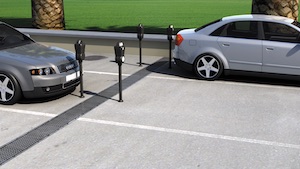View the Clark-Drain entry on BPindex
Climate change is subjecting us to more rainfall – and it’s set to get worse.
This raises urgent issues for the building profession and its drainage practices, since it’s not only the volume of rainfall that is set to increase (10% more per year on average by the end of this century, compared to 1986 – 2005) but also the frequency of individual heavy rainfall events.
And, this, of course, means significantly increased flooding risk – threatening everything from housing, to parking, retail and commercial sites, industrial developments, critical transport infrastructure, and everything in between.
In short, the deluge is coming, and the growth in housing and urbanisation is accelerating it.
 Although our industry alone can’t stop it, it can reduce the risk associated with it – both now and in the future – by adopting a new generation of innovative surface water design and management tools.
Although our industry alone can’t stop it, it can reduce the risk associated with it – both now and in the future – by adopting a new generation of innovative surface water design and management tools.
John Carter, Head of Sales and Marketing at Clark-Drain, explains what these solutions look like.
LINEAR DRAINAGE: GOING WITH THE FLOW
Drainage is at the heart of this strategy, and the obvious requirement in an era of increased rainfall is for increased flow capacity.
But this isn’t just about installing larger drains; it’s also about installing drains that manage the flow more intelligently.
So, the use of a linear drain with a sump, for example, not only filters out debris prone to cause blockages and decrease flow efficiency, it also enables the outflow diameter of all channels to be significantly increased.
Likewise, specially designed internal geometry in the drain can actively minimise inert deposits that can clog the channel and reduce flow, or indeed cause or exacerbate flooding.
Critically, incorporating various forms of these intelligent features across a ‘family’ of drainage solutions that are each certified to BS EN1433:2002 means that the same benefits can be delivered – but scaled up where necessary – across every environment, from a house to an airport.
As technical experts in linear drainage, we know that more water demands more than just a bigger channel – it demands a more efficient journey, too.
ECOLOGICAL CHANGE, ECONOMIC REALITY: WHAT’S THE COST?
Whilst drainage innovation is a key weapon in our industry’s fightback against the effects of climate change, it’s of course entirely legitimate to ask what these novel solutions are going to cost, compared to conventional drainage methods.
 Our view at Clark-Drain, though, is that innovation – however firmly it is ‘grounded in expertise’, as our own slogan has it – also has to be firmly grounded in the economic reality of our customers’ industry. In other words, it has to pay its way.
Our view at Clark-Drain, though, is that innovation – however firmly it is ‘grounded in expertise’, as our own slogan has it – also has to be firmly grounded in the economic reality of our customers’ industry. In other words, it has to pay its way.
The good news is that we see plenty of evidence to suggest that it can. Innovations like our Technodrain solution, for example, help minimise costs in so many ways:
- The use of high-density polyethylene (HDPE), combined with an external reinforcing structure, makes for units that are light and extraordinarily robust, so they are cheaper to transport, require fewer workers to carry and install them, and are immune to extreme temperature change and chemical attack from hygiene and road surface substances.
They are therefore cost-efficient from the start, but last longer and so offer low life-cost as well.
- Easy installation features (tongue and groove joints, preformed lateral and vertical channel outlets) enable rapid connection of multiple channels with a ready-mounted grate, and also provide quick and easy connection to both new and existing discharge pipes.
The time, effort, and therefore expense involved in installation is thus kept to a minimum.
- Flexible configurations and connections (tee- and cross-section joints) mean that the drainage line can be easily adapted, enabling rapid, on-the-fly improvements to be made.
This makes it possible to enhance the accuracy, efficiency and cost-effectiveness of the whole drainage system.
 Technodrain is just one of the innovative technologies we create for linear drainage systems. Our leading portfolio of channel and grate assemblies, monocast, heavy duty and high capacity drainage systems have the design versatility to be used across all construction environments – both residential and commercial – each expertly designed to provide the optimum solution in surface water control.
Technodrain is just one of the innovative technologies we create for linear drainage systems. Our leading portfolio of channel and grate assemblies, monocast, heavy duty and high capacity drainage systems have the design versatility to be used across all construction environments – both residential and commercial – each expertly designed to provide the optimum solution in surface water control.
DRAIN WATER, NOT COFFERS
Climate change means we face challenges – but the fightback isn’t feasible if drainage becomes a financial sink-hole for our industry.
Drainage must become more efficient. It must become more intelligent. It must become more cost-effective.
And we believe it has. To find out more, please visit clark-drain.com
